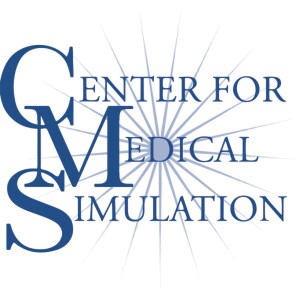
Be the Hero of Your C-Suite: Making Simulation Essential
 2020-10-02
2020-10-02
Download
Right click and do "save link as"
Since the start of the modern simulation era, many in the healthcare simulation community have taken a “Field of Dreams” approach to our simulation efforts, believing, like the character Ray Kinsella in the movie of the same name, that “If we build it, they will come.” Often, however, “buy-in” to simulation programs is just as difficult as getting real people to come to a baseball diamond in the middle of an Iowa cornfield. Simulation increasingly competes with a variety of other healthcare education, quality, and safety efforts for resources.
Rather than creating simulation programs hoping colleagues and trainees will “buy-in”, instead we need to solve real clinical problems, using goals co-created with the colleagues we aim to serve.
In this session, we turned our attention to making an impact with your simulation program. The approach involves two major shifts:
Focusing on other people’s “frames” regarding your simulation program rather than your own; and
Finding ways to help them solve the problems, reach the goals, or do their jobs with your simulation efforts, rather than focusing on education alone.
This approach blends two concepts: Translational simulation and customer-oriented innovation.
Translational simulation focuses on identifying and addressing high yield problems at the “coal face” of clinical care. The focus is on simulation interventions that stretch outcomes beyond clinical and teamwork skills to improving such things as clinical benchmarks, clinical outcomes, organizational culture, and the patient journey.
Customer-centered innovation concentrates on identifying, at a granular level, the problems and pain points, the jobs-to-be-done, and the gains or rewards of the people we aim to serve. This is a shift for many simulation educators and managers because the “customer” is not always the participants in the simulation; rather it is often the funder or leader or manager who makes the program possible. Identifying “what is in it for them” helps us design and position our simulation efforts in a way that attracts resources and buy-in. It also allows us to design our program for maximum impact because we discover and address the outcomes other people in our organization really care about.
view more
More Episodes
SimFails #016: Not So Co-Debriefing
 2023-05-23
2023-05-23
 2023-05-23
2023-05-23
SimFails #015: ESPs Gone Rogue
 2023-03-06
2023-03-06
 2023-03-06
2023-03-06
SimFails #013: Zoom Exhaustion
 2022-10-04
2022-10-04
 2022-10-04
2022-10-04
SimFails #012: No Content Expertise?
 2022-09-20
2022-09-20
 2022-09-20
2022-09-20
SimFails #011: Making Participants Cry
 2022-09-07
2022-09-07
 2022-09-07
2022-09-07
SimFails #010: Simulation Cheating
 2022-08-24
2022-08-24
 2022-08-24
2022-08-24
012345678910111213141516171819
Create your
podcast in
minutes
- Full-featured podcast site
- Unlimited storage and bandwidth
- Comprehensive podcast stats
- Distribute to Apple Podcasts, Spotify, and more
- Make money with your podcast
It is Free
- Privacy Policy
- Cookie Policy
- Terms of Use
- Consent Preferences
- Copyright © 2015-2024 Podbean.com





